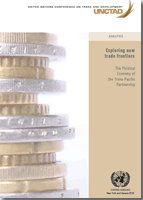
The TransPacific Partnership (TPP) is one of two current mega-regional initiatives that could jointly be the most consequential development in the trading system since the end of the Uruguay Round in 1994.
Together with the Transatlantic Trade and Investment Partnership (TTIP) negotiations that are still underway between the United States and the European Union, this agreement could redefine the landscape of the international trading system.
The focus of this analysis is primarily upon the TPP, but where appropriate reference is made as well to the TTIP.
The TPP negotiations concluded on October 5, 2015, the text of the agreement was released exactly one month later, and the agreement was formally signed on February 4, 2016. This marked the culmination of a decade-long process of negotiation.
The principal objective of the present study is to place the TPP in its larger political and economic context, and to define — but not definitively answer — the questions that arise concerning its impact on the trading system.
The main focus here is on one overarching question and two subsidiary questions. The overall question addressed here is:
What implications does the TPP hold for the evolution of the international trading system?
That system incorporates not just the multilateral agreements of the WTO, but also the larger body of trade law that includes inter alia bilateral and regional RTAs, plurilateral agreements, and other treaties and institutions.
Subsidiary questions:
What does the TPP imply for the multilateral trading system?
What does the TPP imply for the role of the United States in the international trading system?



